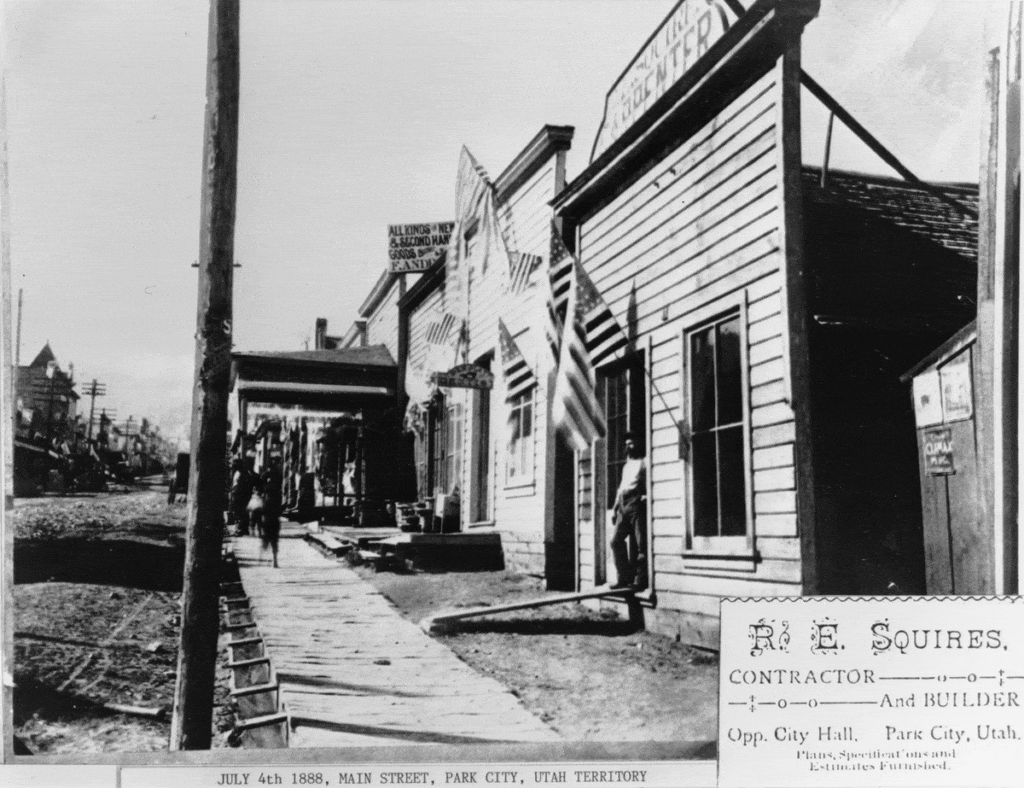The Park City Museum recently hosted a lecture on a series of murders in Park City, the most prominent of which was the lynching of Black Jack Murphy in 1883.
This brought up a question: was “Black Jack” Murphy a black man?
The short answer is probably not. Murphy is a common Irish name (though that doesn’t mean black people don’t or can’t have that last name – Eddie Murphy is a prominent example). But the odds are he was white (although at that time, the Irish were not considered “white” like we think of it today – and were almost as ostracized as black people).
The long answer is: it’s unclear but unlikely…
From a Park Record article about Murphy’s alleged murder of another man, Matt Brennan, the coroner’s jury mentions his formal name as John Murphy. That same article and another refer to him several times as Jack Murphy, making Jack his initial nickname. A third article only calls him Murphy.
If he was already called Jack, it begs the question: was he actually called “Black” Jack Murphy because he was a black man?
Fueling the possibility is the fact that lynching was a common form of murder of black people from around the Revolutionary War through the 1960s, especially with enslaved persons, as a way for white people to get “justice” for a perceived crime or social misstep – and for which the actual law would not be likely to allow for such a severe punishment.
However, lynching was also common in cases where people expressed passion and anger for a crime that did occur. This was the case for Black Jack Murphy. Parkites were so enraged at the murder of the popular Matt Brennan that there was talk of an immediate lynching once the murder was discovered. However, Murphy had turned himself in and the sheriff protected his cell. Murphy was found guilty by a jury, but fears of Parkites taking justice into their own hands led the sheriff to move Murphy to Coalville.
Unfortunately for Murphy, the Parkites’ passion for bringing their own justice was still burning several days after Brennan’s death and they hijacked a train to Coalville, stole Murphy from his cell, brought him back to Park City, and lynched him on a pole at the bottom of Main Street. This appears to be the only lynching in Park City’s history – and we only have one image of a lynching in our Research Library, which is clearly a white man, although the image is not labeled as being Murphy.

Credit: The Park City Historical Society & Museum, Thomas F. Hansen Collection
Aside from Irish heritage, however, Murphy being a black man is also unlikely because “black” was not generally used to refer to people of African, Caribbean, or Latin-American descent in the U.S. until the 1960s, with the rise of the Civil Rights and Black Power movements. Prior to that it was common to hear (or write or refer to people with dark skin as) ‘“colored’ or ‘mulatto person,’” “negro,” and the n-word (African-American became popularized circa 1988). Newspapers typically noted if a person had dark skin, but articles from the Park Record and Salt Lake Herald-Republican did not use any of those terms to refer to Murphy.
At second thought, one might think that the Black Jack nickname derives from the card game (now all one word, but originally two when called Black Jack, as opposed to its other names: twenty-one or Vingt-Un).
However, card and board game historian Thierry Depaulis determined that Americans did not begin to refer to the game as Black Jack until the Klondike Gold Rush (1896-1899). Murphy’s case and lynching occurred in 1883, predating the name of the game. It is entirely possible, however, that Depaulis has not found the origin of the name in America.
Since there is neither a primary source I can find that explains Murphy’s nickname, nor a confirmed photograph of him, I can neither confirm nor refute that the nickname comes from Murphy’s gaming habits or his appearance. Other possibilities include a preference to dress in black; being a dark, morbid, or melancholy person; or being dirty.
Learn more in the Park City Museum’s exhibits or Hal Compton Research Library, or on our YouTube channel.